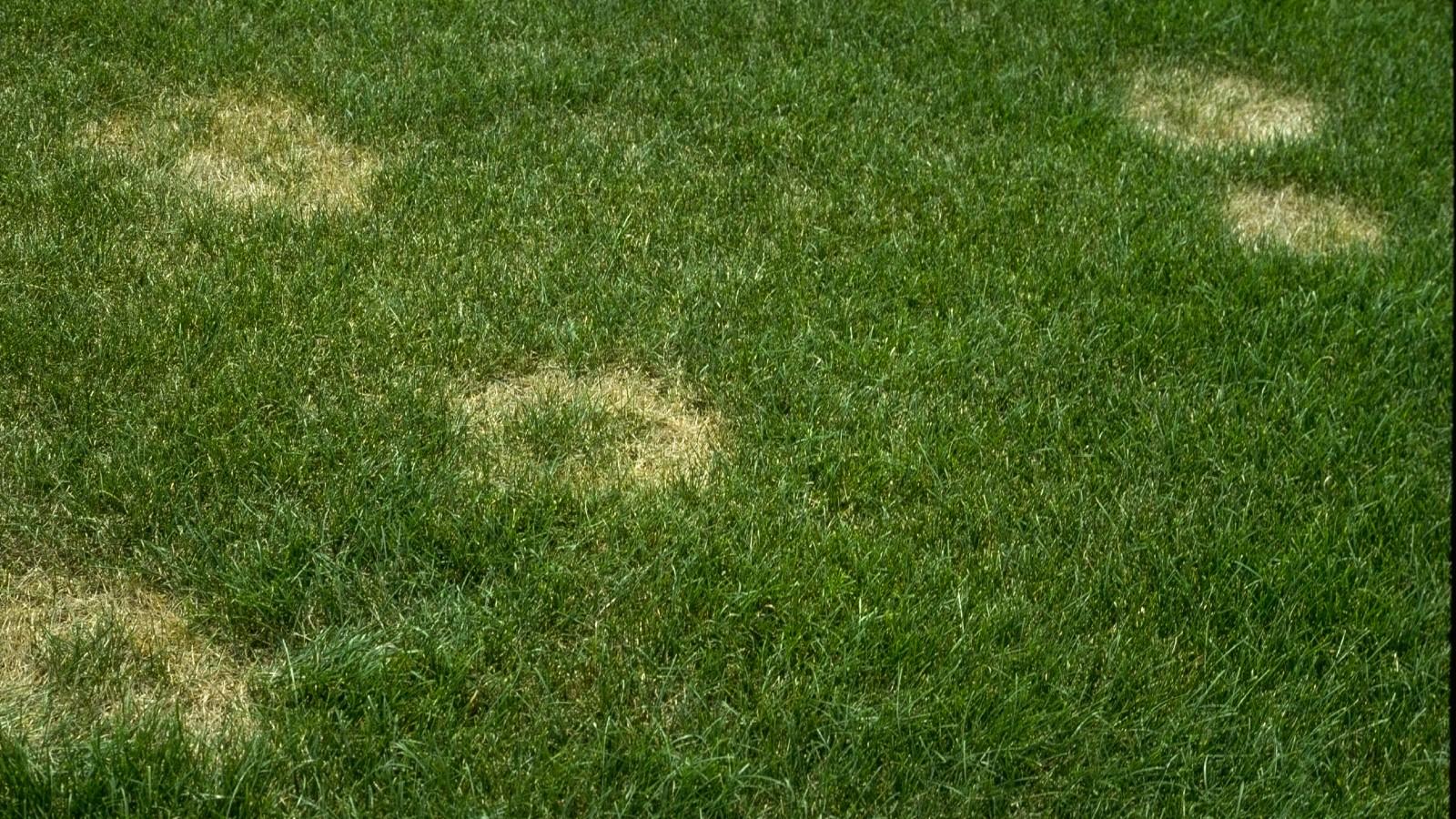Susceptible grasses
The most commonly infected grasses are Kentucky bluegrass and fine leaf fescue.
Primary symptoms
- Initial symptoms on Kentucky bluegrass are roughly circular straw-colored patches of turf that may resemble another turf disease called dollar spot.
- These patches continue to enlarge with outer edges taking on a yellow or bronzed appearance.
- The leaf blades turn brown from the tip giving the turf a straw-colored appearance.
- Healthy turf may survive in the middle of the patches giving a doughnut or frog eye effect.
- Circular depressions within the patches, called crater pits, may also be present.
- Fine fescue grasses develop orange or bronze-colored patches prior to the straw color.

Photo: Lee Miller, University of Missouri, Bugwood.org
Season
- This disease usually appears in late June or early July when temperatures above 90F occur.
Environmental conditions
- This disease is always more severe in the full sun.
- Daytime temperatures of 90F and soil temperatures of 78F coupled with moisture predispose susceptible turf to this disease.
Management
- Plant a tall fescue lawn.
- Select resistant cultivars when establishing turfgrass.
- Avoid over-fertilization of turf, especially in the spring.
- Mow at the highest recommended height.
- Avoid light frequent irrigations.
- Reduce thatch when it exceeds a ½ inch in thickness.
